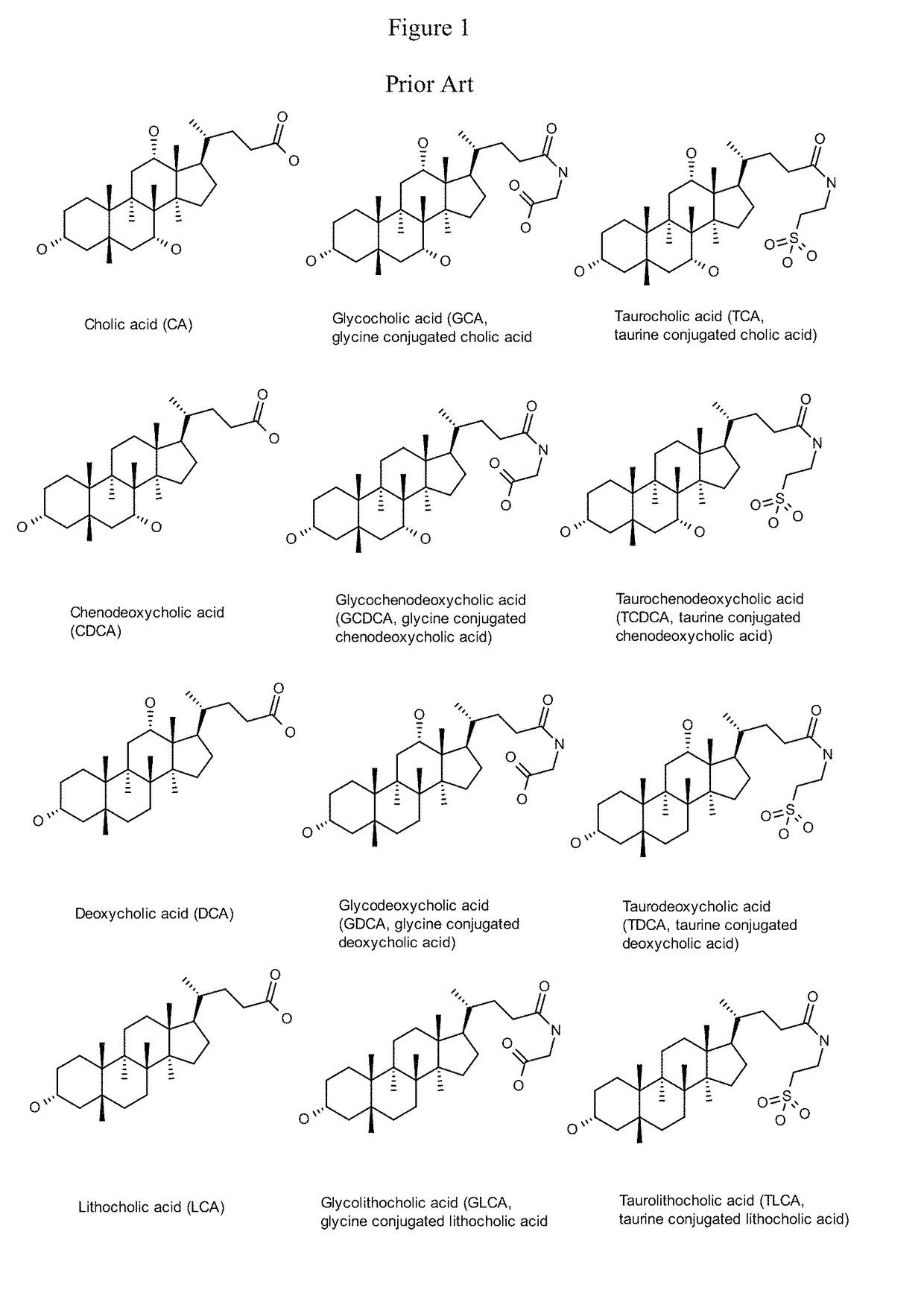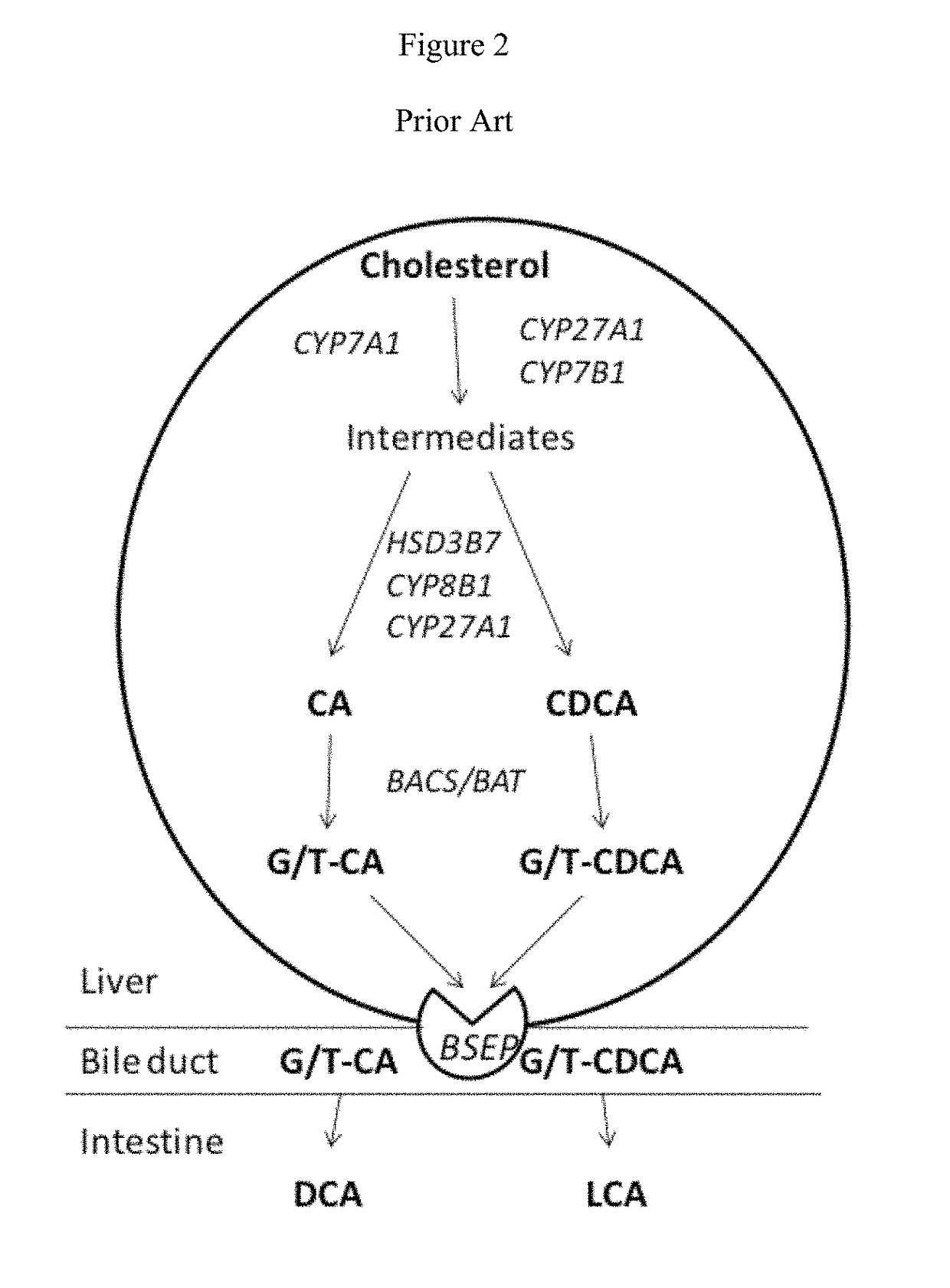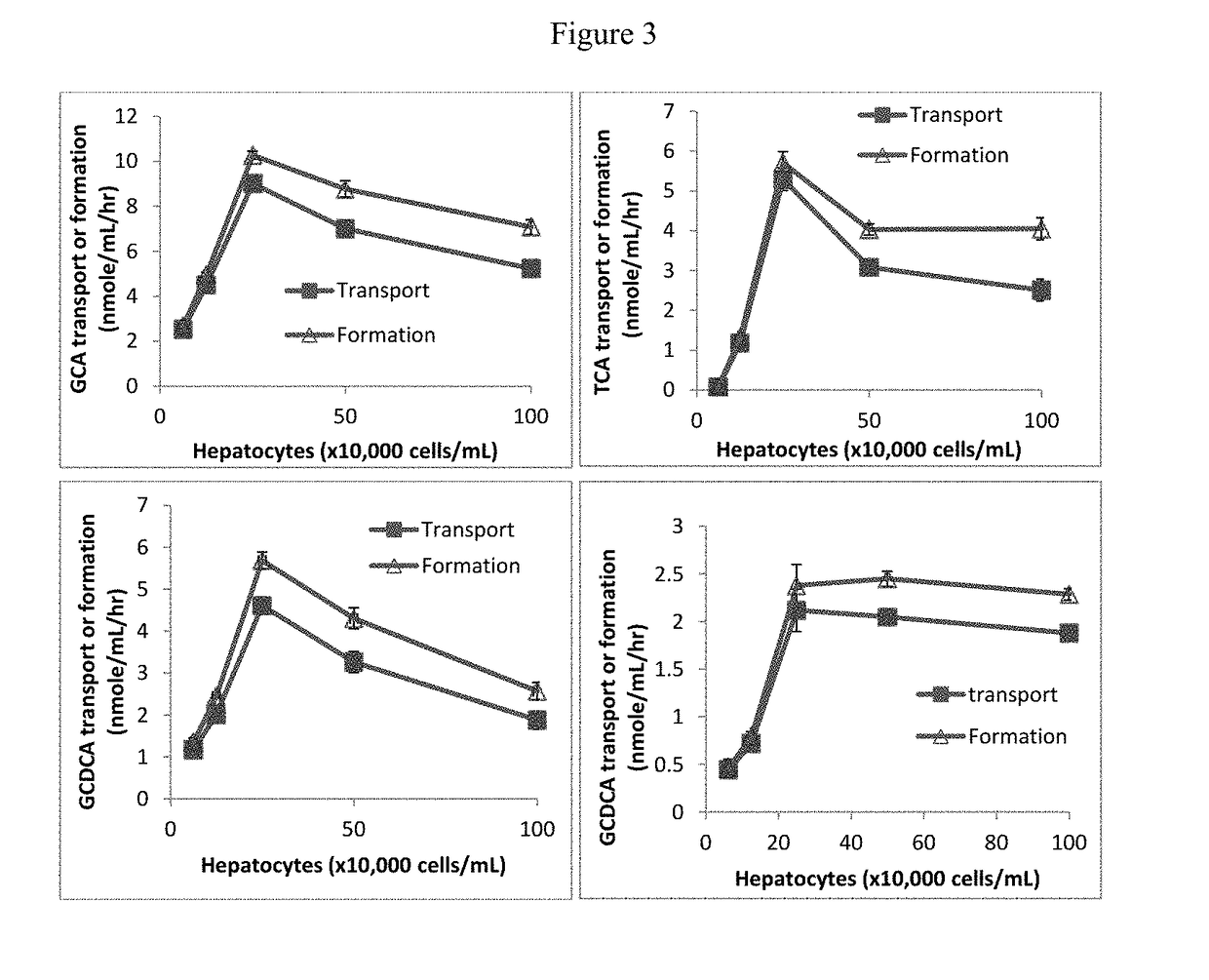Method for measuring bile salt export transport and/or formation activity
a technology of bile salt and export, which is applied in the direction of instruments, material analysis, biological material analysis, etc., can solve the problems of liver failure, bile acid and salt can be potentially toxic to cells, and liver failure is associated with severe liver failure, and the effect of progressive intrahepatic cholestasis
- Summary
- Abstract
- Description
- Claims
- Application Information
AI Technical Summary
Benefits of technology
Problems solved by technology
Method used
Image
Examples
example 1
[0123]Effects of hepatocyte density on the transport and formation of bile salts: Hepatocytes were prepared in suspension in William E buffer at concentrations ranging from 0 to 1 million cells / mL. After pre-incubation in a 96-well plate for 10 minutes at 37° C. under 5% CO2, the hepatocyte suspensions were incubated with cholic acid or chenodeoxycholic acid at 100 μM in the final volume of 100 μL at 37° C. under 5% CO2 for 1 hour. Experiments were carried out in triplicate or duplicate. Suspensions were then centrifuged at 2000 for 15 minutes at room temperature. The hepatocyte cell pellets were re-suspended in William E buffer and subjected to a standard freeze-thaw procedure and sonication to lyse cell membranes. Separately, the 2000 RPM supernatants and the cell lysates were mixed with 3× volume acetonitrile, and the mixtures centrifuged at 4000 RPM for 20 minutes at 4° C. The supernatants were analyzed by LC / MS / MS for glycocholate, glycochenodeoxycholate, taurocholate and / or ta...
example 2
[0125]Time courses for transport and formation of bile salts in hepatocytes: Hepatocytes at 0.25 million cells / ml were incubated with cholic acid or chenodeoxycholic acid in William E buffer at 100 μM in the final volume of 100 μL at 37° C. under 5% CO2 for various time ranging from 0-4 hours. The suspensions were then centrifuged at 2000 RPM for 15 minutes at room temperature. The hepatocyte cell pellets were re-suspended in William E buffer and subjected to a standard freeze-thaw process and sonication to lyse cell membranes. Separately, the 2000 RPM supernatants and the cell lysates were mixed with 3× volume of acetonitrile, and the mixtures were centrifuged at 4000 RPM for 20 minutes at 4° C. The supernatants were analyzed by LC / MS / MS for glycocholate, glycochenodeoxycholate, taurocholate and / or taurochenodeoxycholate. LC / MS / MS analysis was conducted in duplicate or triplicate.
[0126]The transport and formation of bile salts was increased when the incubation time increased from 0...
example 3
[0127]Effect of bile acid concentration on the transport and formation of bile salts in hepatocytes: Human hepatocytes at 0.25 million cells / ml were incubated with cholic acid or chenodeoxycholic acid in William E buffer at various concentrations ranging from 0-1000 μL in the final volume of 100 μL at 37° C. under 5% CO2 for 1 hour. The experiments were carried out in duplicate or triplicate. After incubation, the suspensions were centrifuged at 2000-RPM for 15 minutes at room temperature. The cell pellets were re-suspended in William E buffer, and followed by frozen / thaw and sonication to lyse the hepatocytes. Separately, the 2000-RPM supernatants and the cell lysates were mixed with 3× volume of acetonitrile and the mixtures were centrifuged at 4000-RPM for 20 minutes at 4° C. The supernatants were analyzed by LC / MS / MS for glycocholate, glycochenodeoxycholate, taurocholate and / or taurochenodeoxycholate. LC / MS / MS analysis was conducted in duplicate or triplicate.
[0128]The transport...
PUM
| Property | Measurement | Unit |
|---|---|---|
| time | aaaaa | aaaaa |
| pKa | aaaaa | aaaaa |
| pKa | aaaaa | aaaaa |
Abstract
Description
Claims
Application Information
 Login to View More
Login to View More - R&D
- Intellectual Property
- Life Sciences
- Materials
- Tech Scout
- Unparalleled Data Quality
- Higher Quality Content
- 60% Fewer Hallucinations
Browse by: Latest US Patents, China's latest patents, Technical Efficacy Thesaurus, Application Domain, Technology Topic, Popular Technical Reports.
© 2025 PatSnap. All rights reserved.Legal|Privacy policy|Modern Slavery Act Transparency Statement|Sitemap|About US| Contact US: help@patsnap.com



